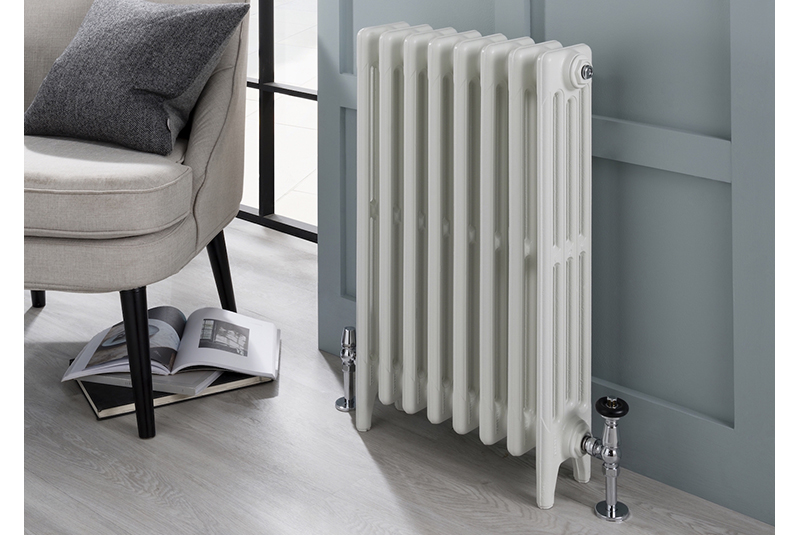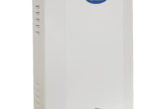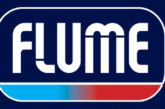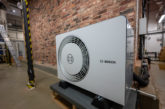
Simon Morris, Marketing Manager at The Radiator Company, provides a useful guide to designer radiator specification and explains why it pays to think about the type of metal it’s made from.
When it comes to upgrading or extending the central heating system, don’t be too quick to opt for like-for-like radiators. Speak to your customers about designer radiators. Quite simply, they offer you an ideal commercial opportunity to deliver a more efficient heating solution, and one that provides the all-important ‘wow’ factor that can help delight your customers.
The first thing to consider when selecting a designer radiator is whether the radiator can sufficiently heat the space. As you will be well aware, the best way to achieve this is by calculating the required British Thermal Units (BTUs). Today, there are tools online to help do the calculation for you and leading manufacturers such as The Radiator Company will have these useful estimators available on their websites. You will simply need to answer a few questions on the type of room, window, how exposed the space is and the room dimensions. This information will be used to generate an estimate of the BTU/hr and Watt requirements based on the EN442 standard of Delta T50.
Next, it is important to think about the type of material used to manufacture the radiator – as the performance characteristics of each material can influence the size of the radiator required to deliver the desired heat output.
Steel
Steel is commonly used to manufacture designer radiators, primarily because it is easy to shape and to create distinctive shapes and sizes. So steel is a good option for those looking for a really statement piece.
Mild steel is a more cost-effective material and is therefore a popular choice for those looking to replace multiple radiators at the same time and for any projects that are tight on budget. Mild steel radiators are strong and can last for some time, but this material can be prone to rusting. The good news is this can be prevented with regular servicing and by adding an inhibitor to the system.
For customers who have scope for a larger budget, stainless steel radiators should be considered. This material is an excellent heat conductor, so it heats up quickly and remains warm for a long time, even after the radiator has been turned off. Stainless steel is also durable and rust and corrosion resistant, so radiators are virtually maintenance free (although it is still beneficial to ensure the system is dosed with inhibitor) – a key benefit for the homeowner, as lifetime costs can be reduced.
Aluminium
Aluminium is a superconductor, which means that it can quickly respond to thermostatic changes. As a result, aluminium radiators make it easy to regulate room temperature, as they will heat up and cool down very quickly. This makes them very efficient and easy to control.
Aluminium radiators are also extremely lightweight, so ideal when looking for a simple installation process. Lightweight, aluminium designer radiators will be suitable for a wide range of projects as well, as they can be installed on walls that might not be able to take the weight of radiators made from other, heavier materials.
Another thing worthwhile considering (and relaying to customers) is that, although aluminium radiators are slightly more expensive compared to mild steel models, in a correctly sized system, this extra expense should be more than covered by the lifetime efficiency savings. Compared to other options, less water is required for aluminium radiators and they are suitable for use with renewable energy sources and systems running on a lower Delta T (the difference between the target room temperature and the average temperature of the water entering and leaving the radiator).
An additional benefit is that, not only are aluminium radiators from The Radiator Company made from recycled materials, they are also fully recyclable at the end of their useful life – improving the overall environmental impact of the project.
Cast iron
Finally, cast iron designer radiators are ideal for use in older, period buildings, which commonly have less insulation. That is because cast iron radiators take longer to heat up and cool down in comparison to those made from other materials, and as a result, retain heat well. Therefore, they can provide a continual source of heat.
In addition, cast iron designer radiators can complement the aesthetic of period properties well. For a really authentic feel, leading manufacturers offer colour palettes typical of Georgian or Edwardian properties, as well as a selection of RAL colours and special finishes to suit every project.
When specifying radiators, think beyond the one-size-fits-all models to ensure the product chosen best suits customers’ needs. Take the opportunity to up-sell and increase your margin by suggesting designer models. As well as aesthetic benefits, designer radiators offer outstanding performance and a reduction in ongoing maintenance costs.













